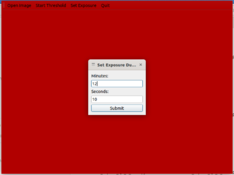imgprojts
Member
First let me brush over the details of how I make cyanotypes. I've very new to this art form. I am using MW's "New Cyanotype" Formula and for Chiba, I am using ferric ammonium oxalate as sensitizers. A while back this year I started this as my kid's science experiment, but then I wanted to experiment and see if I could use a projector to make cyanotypes work. Indeed you can use either an old LED projector or a DLP projector. I have one that is 1000 lumens and the dlp that is 3000 lumens. this weekend I was toying with the idea of calibrating to a python based digital sheet. forgive me for not knowing the exact name of such thing, but basically the normal way is to expose little rectangles of a sensitized sheet a few minutes or seconds at a time to get an idea of how long it should take to expose a cyanotype. So I was able to use Chat-GPT to make such a thing for a projector image. You click on this thing and the image goes completely black except for an initial square in the corner. The, slowly depending on how much time to told the program, it will expose another white square, then another and so on. each square has the time stamp on it. So I tried this last Sunday and it totally worked! I'll post the code below. So then yesterday I was thinkin, hmmm could it work by threshold an image and starting from a fully white screen, slowly transitioning thru an image from fully white to full black. I went on Mr. GPT and I was to able to come up with such a thing. This time I added some menus. One to pick the image you want to expose and the next to select the time you want to expose it for. I think then I can also change the way it exposes. like maybe add curves to make it linger more on the white and less on the black. I am not 100% sure if this is not something that can be done by just making a proper negative. Basically it is a time based negative or an exposure sweep. Let me know what you think!





 . The cool thing is that there are hundreds of thousands of very cheap projectors online and you don't need high rez to get something decent.
. The cool thing is that there are hundreds of thousands of very cheap projectors online and you don't need high rez to get something decent.

